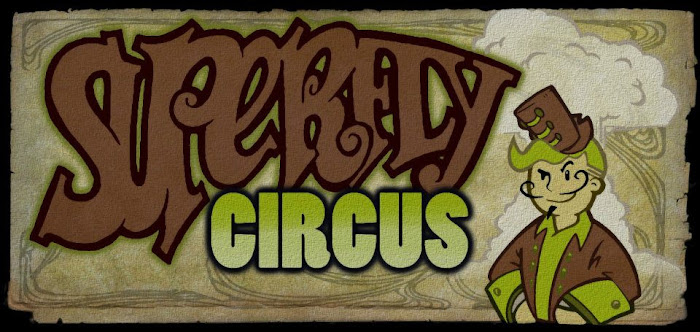I'm the kind of gamer that loves virtually all games, be they tabletop, video, or otherwise. One could classify me as an Equal Opportunity Gamer, I suppose. That being said, I truly have a passion for tabletop games that are set up for two players as I, enviably, have a spouse who also loves games, and with two little demon-spawns running around, it's in my best interest to get games that don't need a legion of gamers, foaming at the mouth, or two hours, to play.
I recently had an opportunity to purchase Rio Grande Games' "Lost Cities" on the cheap, and although I am not a huge Reiner Knizia fan, the price was right and a quick two-player game will certainly see more playtime than a game like Risk. When the package arrived, I was absolutely underwhelmed by the art, although I was hopeful that the theme was not the standard painted-on fare that Knizia is known for.
I cracked the box to find a small, rectangular play board with five colored rectangular areas, and 60 numbered, oversized cards in five suits each, carefully packed in a quite sturdy plastic, blow molded card holder. I was immediately and woefully unimpressed with the card artwork, and the fact that the cards are about as large as a moleskinne notebook didn't help. Seeing as I paid for it, I figured I had better give it a go anyhow.
After perusing the rulebook, which thankfully was very concise and quite diminutive, it was apparent that the theme is, as I suspected, an afterthought. This game could've been about constructing torture devices or exploiting Mexican labor on a building jobsite, and it wouldn't have changed a thing, and probably would've been more exciting. The lack of a strong theme isn't truly a detractor from the game itself, but paired with the bland artwork, I was thoroughly bummed that this game was so simple looking. I soldiered on, regardless.
The essence of the game is that you and your opponent play as explorers, tasked to explore 5 ancient ruins on someone else's dime, and in order to do this you have to build a deck of cards under each colored expedition space on the board by placing cards, on your side of the board, in sequential order. It sounds simple, but this is complicated by the fact that each color has three "investment cards" which depict the player making a back alley deal with some sinister art-collector investors, and these act as multipliers to your final score. There are tough decisions to be made both initially, and as the game progresses.
The gameplay itself essentially consists of playing a card onto an expedition or discarding a card onto the board, and finally, taking a card from the draw deck or from a card that was discarded onto the board. All in all, gameplay mechanics truly don't get much simpler than this, but the decision making process itself is more challenging than one would expect. The random draw factor is the real "X Factor" here, and this is further hampered by the fact that if you discard a card to the board hoping to get a better card from the draw, you may allow your opponent may snatch it out from under you, helping them and leaving you sad and dejected.
The game immediately ends once the last card has been taken from the draw pile, and you tally your scores. This was hands-down the least fun part of the game, not only because I lost miserably every game we played, but because it involves some math, which is only fun to those who would rather be solving quadratic equations for "N" than playing games.
The short version of scoring is that any expedition you've started requires you to immediately take a -20 point hit, to cover the initial cost of funding the expedition. If you played investment cards on an expedition, but have no numbered expedition cards on top of it, it multiplies your investment loss. Conversely, if you did have some expedition cards on top of the investment cards, you subtract your initial "-20 investment" then multiply the sum of the cards to get your score for that expedition. This can be tedious, as you potentially have five expeditions to score, so if you are a little high, or failed math in grade school, you may be at it a while. Suffice to say, a pencil and some paper are good things to have when playing this game.
The good news, though, is that I found this game to be enjoyable. The gameplay is brisk, and you can expect to finish one round in about fifteen to twenty minutes. The rulebook recommends that you play three rounds and tally the scores to declare a winner, but we preferred to play single-round games sequentially to avoid having to remember calculus during the scoring. All things considered, we thought the game was fairly fun, albeit sterile. Despite my nitpick that the theme was absolutely irrelevant to the game, and even despite the bad card art, this is a game that we will likely play again.
Things I liked:
*Concise rulebook that can be read during one session on the can
*Two player game, expandable to four
*Brisk, easy to understand gameplay, that lasts 20 minutes a round
*The theme, while painted-on, was passable and made sense
Things I detested:
*The art was less attractive than "Bazooka Joe" comics, by several orders of magnitude
*The scoring, although not really that hard, was a pain and not intuitive
*Oversized cards were simply not necessary and not conducive to shuffling
Overall:
A decent, fun two-player game that you can use as a filler, or to play if you only have a half an hour to do something other than watch an episode of Matlock...again.
Rating:
3/5 Stars
Subscribe to:
Post Comments (Atom)







No comments:
Post a Comment